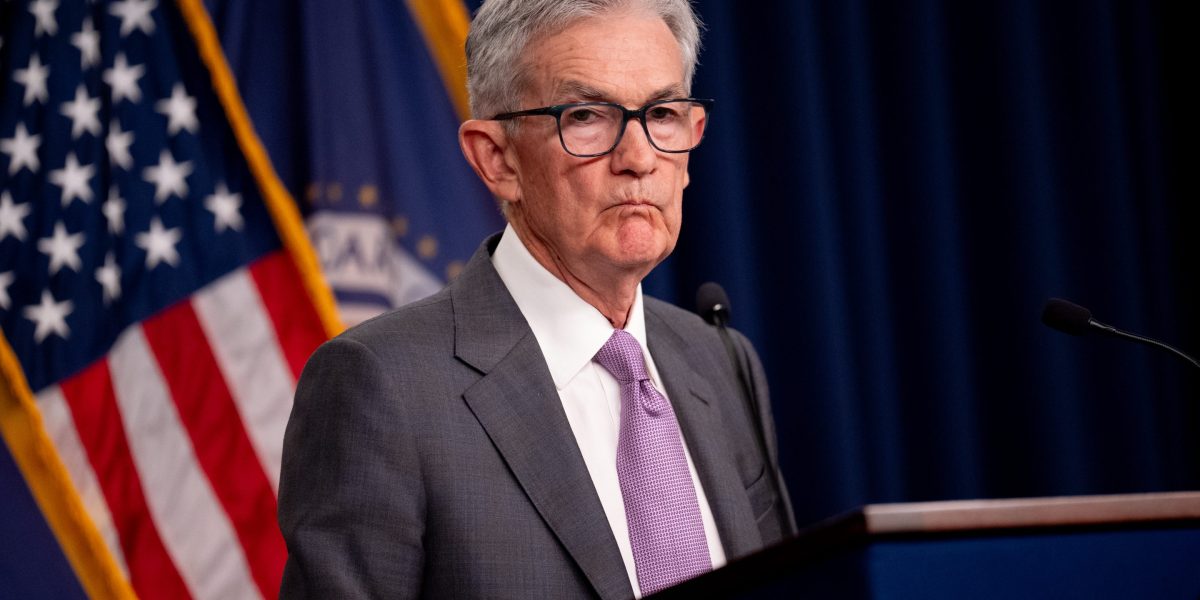The problem isn’t that the data is bad; in fact, most of it seems to be trending in the right direction. It’s that the Fed is relying on it too much to make its decisions, Fundstrat Global Advisors managing partner Tom Lee told CNBC.
By doing so, Lee argued, the Fed was late to make the decisions it needed to in order to curb inflation—and the Fed risks repeating that same mistake again. “Now they’re missing the soft landing turn,” Lee said.
The probabilities of a soft landing are going up, according to Lee, but are not yet a sure thing. “[The] key is the Fed getting off data dependence because data dependence is the reason they missed the inflation turn,” he said.
Lee’s comments come in stark contrast to the Fed’s data-dependent approach. Federal Reserve Chair Jerome Powell has repeatedly said he won’t cut rates until he sees more “good data.”
Powell seems to finally be getting his wish. Federal Reserve officials “judged that recent data had increased their confidence that inflation was moving sustainably toward 2 percent,” according to the minutes from the latest Fed meeting released on Wednesday.
However, the Fed wasn’t always so squarely focused on data. In fact, the idea that it should be is relatively new in the history of the Fed, only starting around the mid-2010s. Essentially it means the Fed doesn’t commit to a specific course of action when it comes to cutting rates and lowering inflation. Instead, it makes its decisions based on specific market indicators that point to the fact prices are actually falling. In the past, the Fed would sometimes make its interest rate decisions based on a predetermined timeline. For example, in August 2011, it openly stated that it expected interest rates to remain at zero percent until “at least through mid-2013.”
Critics say the Fed’s data-dependent approach means it sometimes ends up behind the curve because it waits for the data to come in rather than anticipating where the economy is headed. They also say relying too heavily on data isn’t helpful if the data is giving mixed signals. This was especially prevalent over the past year, in which inflation kept climbing but consumers kept spending, when usually the opposite happens during periods of high prices. (That said, consumers are now becoming thriftier than they were earlier in the year.)
Data dependency done right requires sifting through it all while recognizing and separating the important parts from the distractions, according to James Bullard, former president of the Federal Reserve Bank of St. Louis.
“Every observation on the economy (e.g., a GDP report or an employment report) contains a certain amount of signal and a certain amount of noise,” Bullard, a supporter of data dependency, wrote in a 2016 blog post. “The art of policymaking includes separating the signal from the noise.”
The need for the Fed to accurately keep its finger on the pulse is critical at the moment, given that the economy is teetering on a knife’s edge between a miraculous soft landing and a recession. For the better part of two years, the Fed managed to lower inflation without prompting a recession and a spike in unemployment. But now if it misses the proper timing for a rate cut, all that work could go to waste. At the moment, economists and investors believe a rate cut in September is all but certain—and a second before the end of the year is likely.
Lee is already eyeing further cuts. “Cutting more aggressively would actually make sense, at least from the market’s perspective,” he said.

